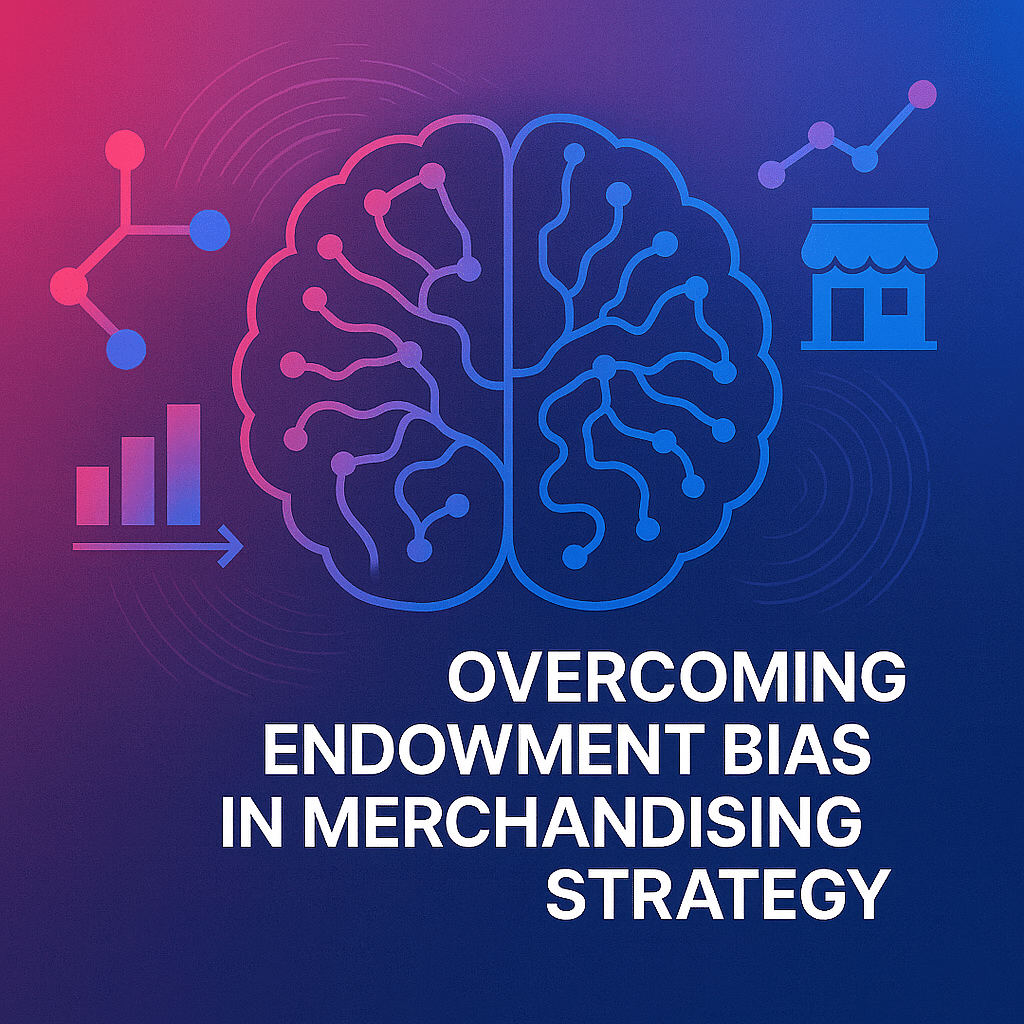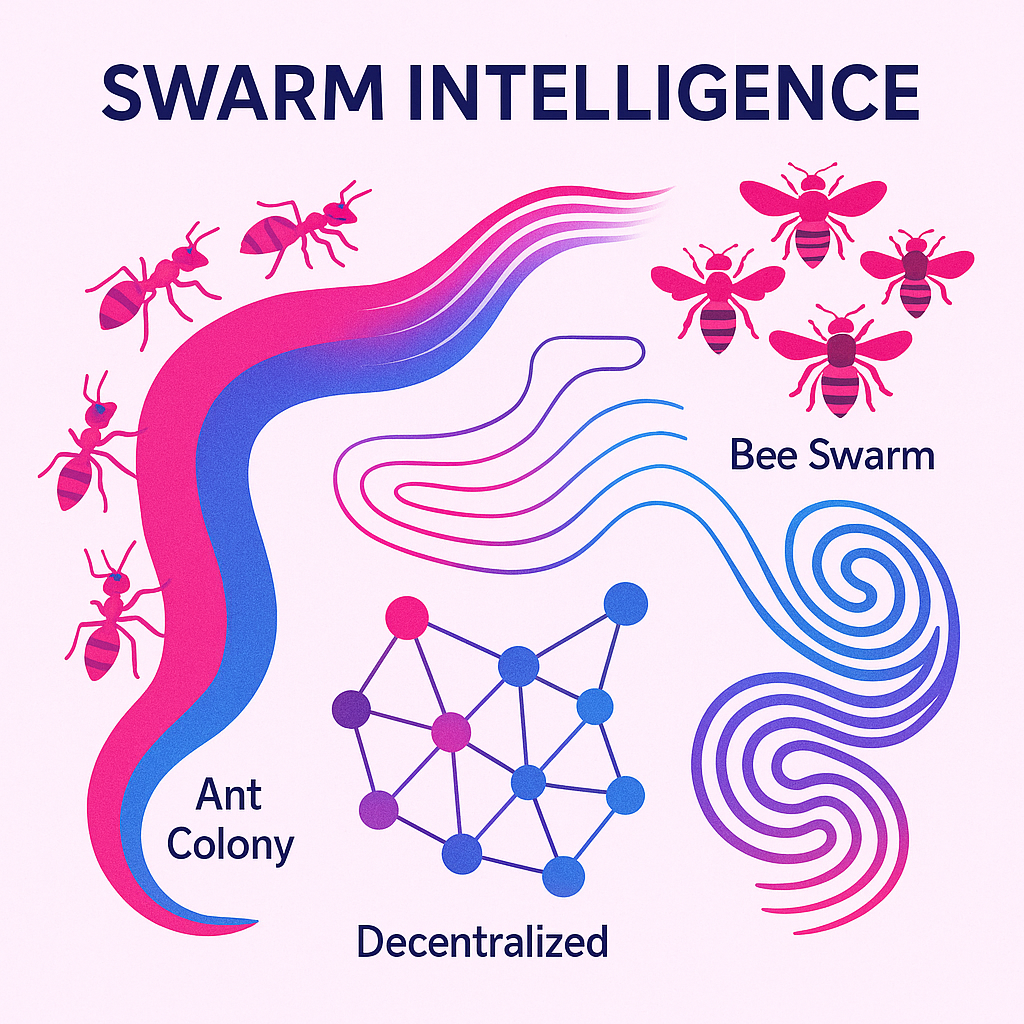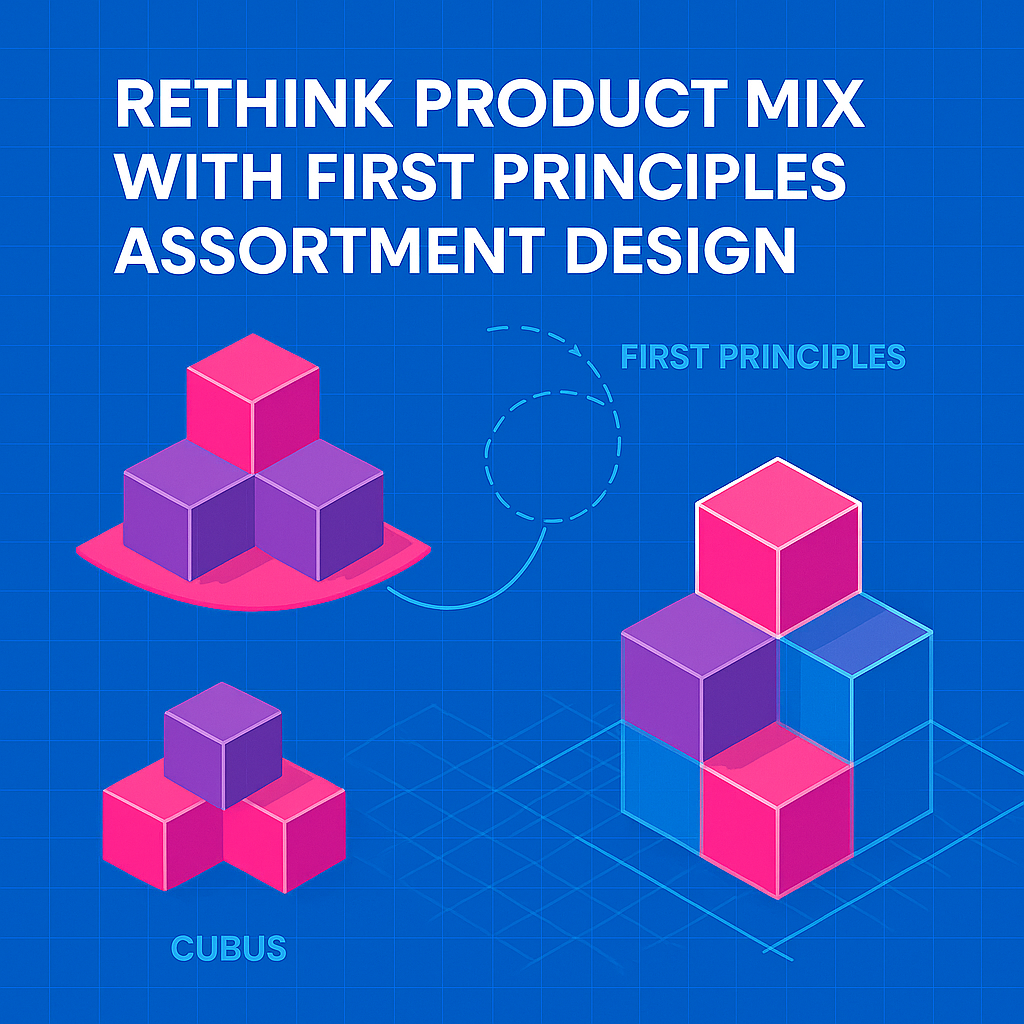OVERCOMING ENDOWMENT BIAS IN MERCHANDISING STRATEGY

Retailers today face a paradox: while the industry demands rapid innovation, many organizations remain anchored to outdated systems and processes. This inertia is not just operational,it is psychological. The endowment bias in merchandising, a cognitive bias rooted in behavioral economics, causes retailers to overvalue existing merchandising systems and processes simply because they already own them. This bias leads to resistance to retail innovation, inefficient assortment planning, and a hidden “innovation tax” that drains significant value from the business.
Understanding and overcoming this bias is critical for retail executives seeking to modernize merchandising strategies, optimize product assortments, and drive long-term profitability.
THE PSYCHOLOGY BEHIND ENDOWMENT BIAS IN MERCHANDISING
The endowment effect, first identified by behavioral economist Richard Thaler, shows that people assign more value to things they own than to identical alternatives they do not. In retail merchandising, this manifests as an overattachment to legacy merchandising systems, outdated vendor relationships, and traditional assortment planning methods.
This bias is compounded by two other psychological forces:
1. Loss aversion: The fear of losing what is already owned outweighs the potential benefits of new investments.
2. Status quo bias: A preference for maintaining current systems even when change offers better outcomes.
These cognitive biases are not just individual quirks. In corporate settings, they become institutionalized, leading to systemic resistance to retail innovation and suboptimal decision-making across merchandising operations.
HOW ENDOWMENT BIAS CREATES A HIDDEN TAX ON RETAIL INNOVATION
Retailers often unknowingly impose an “innovation tax” on themselves by demanding higher ROI for new initiatives than for existing programs. For example, when evaluating AI-driven assortment planning tools, executives may require a 4.2x return, while legacy systems continue with only 1.3x returns. This asymmetry leads to:
– Premature termination of pilot programs
– Underfunding of transformative technologies
– Missed opportunities in emerging retail channels
In merchandising, this tax shows up as product mix inertia. Retailers stick with familiar assortments even when consumer preferences shift. Legacy merchandising systems, often built for a slower, more predictable retail environment, continue to consume large portions of IT budgets despite delivering diminishing returns.
A Fortune 500 retailer maintained a 15-year-old merchandising platform that consumed 40 percent of its technology budget. Despite clear signs that the system could not support real-time assortment adjustments or integrate with modern demand signals, leadership hesitated to replace it. The rationale? “We’ve already invested so much.” This is endowment bias in merchandising at scale.
THE COST OF LEGACY MERCHANDISING SYSTEMS
Legacy merchandising systems are often seen as safe bets. They are familiar, integrated into operations, and supported by long-standing vendor relationships. But this perceived safety is misleading. These systems:
– Lack agility to respond to fast-changing consumer trends
– Struggle with real-time data integration
– Limit personalization and localization of assortments
Industry analysts estimate that retailers maintain two to four “zombie systems” on average,platforms that consume 15 to 20 percent of IT budgets while delivering negative returns. These systems persist not because they create value, but because of sunk cost fallacy and fear of disruption.
A leading home goods retailer delayed replacing its legacy product planning tool for three years. During that time, competitors adopted AI-powered assortment planning, gaining speed and precision. When the retailer finally made the switch, it had lost significant market share in key categories.
RETAIL INNOVATION RESISTANCE: WHY GOOD IDEAS DIE
Retailers often kill promising innovations not because they lack merit, but because they are held to unrealistic standards. A new merchandising optimization platform might be rejected due to uncertain ROI, while a legacy system continues without scrutiny.
This resistance is especially strong in assortment planning, where executives fear cannibalizing existing sales. For example, a grocery chain delayed launching a small-format urban store concept due to concerns it would cannibalize larger suburban locations. Yet data showed urban shoppers were underserved and preferred convenience. When the concept finally launched, it outperformed expectations, proving the fears unfounded.
This pattern repeats across categories:
– Electronics retailers delay omnichannel features fearing reduced in-store impulse buys
– Beauty brands hesitate to adopt AI-powered product recommendations due to perceived complexity
– Fashion retailers resist demand-based pricing models despite clear margin benefits
These are not rational decisions. They are symptoms of cognitive bias in retail decisions.
MERCHANDISING PROCESS OPTIMIZATION: A DEBIASING FRAMEWORK
To overcome endowment bias in merchandising, retailers must implement structured debiasing frameworks. Based on behavioral economics research and real-world applications, four principles stand out:
1. Equal Scrutiny for All Investments
Every merchandising investment,whether legacy or new,should face the same evaluation criteria. Zero-based budgeting forces all programs to justify their existence based on forward-looking returns.
A European lifestyle brand implemented this approach and reallocated 30 percent of its merchandising budget from legacy systems to AI-driven planning tools. The result was a 23 percent improvement in portfolio ROI.
2. Frame Decisions as Choices, Not Approvals
When evaluating a new merchandising initiative, compare it directly to the status quo. Make the decision a choice between two options, not a go/no-go on the new idea.
A home improvement retailer used this method to evaluate store formats. By comparing large and small formats side by side, leadership realized that small formats delivered better returns in urban markets. The company accelerated rollout, capturing $40 million in additional EBITDA.
3. Use Pre-Mortems to Surface Hidden Risks
Pre-mortems ask teams to imagine a future failure and work backward to identify what went wrong. This technique helps uncover risks in both new and existing merchandising processes.
A beauty retailer used pre-mortems to evaluate its seasonal assortment planning. The exercise revealed that the current process was too slow for fast-moving trends. By shifting to a demand-driven model, the company improved sell-through rates by 18 percent.
4. Set Asymmetric Hurdle Rates That Favor Exploration
Because cognitive biases already create unfair evaluation standards, retailers should intentionally favor exploration. Accept lower ROI thresholds for novel merchandising initiatives while applying higher standards to legacy systems.
A consumer electronics retailer created an innovation fund with relaxed ROI requirements. This allowed them to test computer vision for shelf inventory and conversational AI for customer service. Both initiatives, once proven, delivered strong returns and were scaled enterprise-wide.
REAL-WORLD APPLICATIONS OF DEBIASING IN MERCHANDISING
Several retailers have successfully applied these principles:
– A Fortune 500 grocery chain replaced its legacy assortment planning tool with an AI-driven platform. Within one year, it improved gross margins by 1.8 percentage points in key categories.
– A leading fashion retailer implemented blind RFPs for vendor selection, improving assortment quality by 15 percent and reducing costs by 12 percent.
– A home goods brand reframed its merchandising decisions as portfolio choices. This led to the discontinuation of underperforming product lines and the introduction of high-velocity SKUs based on real-time demand signals.
These examples show that overcoming endowment bias in merchandising is not theoretical. It delivers measurable business results.
BENEFITS OF ADDRESSING ENDOWMENT BIAS IN MERCHANDISING
Retailers that tackle this bias head-on see significant benefits:
– Faster adoption of high-ROI merchandising technologies
– Improved product mix alignment with customer preferences
– Reduced IT spend on underperforming systems
– Increased agility in assortment planning
– Stronger vendor performance through competitive evaluation
These benefits compound over time, creating a strategic advantage in a highly competitive market.
HOW TO IMPLEMENT A MERCHANDISING DEBIASING STRATEGY
Retail executives can take the following steps to reduce endowment bias in merchandising:
1. Audit current merchandising investments for bias indicators
2. Implement zero-based strategy reviews for all merchandising programs
3. Reframe innovation proposals as choices between options
4. Use pre-mortems to evaluate both new and existing processes
5. Adjust ROI thresholds to favor exploration and learning
6. Train merchandising teams in behavioral economics principles
7. Create protected funding for high-potential, high-uncertainty initiatives
COMMON MISTAKES TO AVOID
– Assuming legacy systems are low-risk because they are familiar
– Applying higher ROI standards to new initiatives than to existing ones
– Ignoring the opportunity cost of inaction
– Failing to measure the true cost of outdated merchandising processes
– Treating innovation as a one-off project rather than a portfolio strategy
FUTURE TRENDS: MERCHANDISING IN AN AI-DRIVEN RETAIL WORLD
As AI and machine learning become central to retail operations, the ability to overcome cognitive bias will become even more critical. Retailers that cling to outdated merchandising processes will fall behind competitors who embrace data-driven, adaptive strategies.
Future-ready merchandising will require:
– Real-time assortment adjustments based on demand signals
– Dynamic pricing models that reflect consumer behavior
– Integrated vendor ecosystems optimized through continuous evaluation
– Agile planning cycles that respond to market volatility
Retailers that address endowment bias today will be better positioned to lead in this future landscape.
CONCLUSION
Endowment bias in merchandising is a hidden but powerful force that distorts investment decisions, slows innovation, and reduces profitability. By recognizing this bias and implementing structured debiasing frameworks, retail leaders can unlock significant value.
The coffee mug that people overvalue simply because they own it is a metaphor for legacy merchandising systems that consume millions while delivering marginal returns. Retailers must stop asking, “What will we lose if we change?” and start asking, “What are we missing by staying the same?”
The path forward is clear. Audit your merchandising investments. Apply equal scrutiny to all initiatives. Reframe decisions as choices. Embrace exploration. Train your teams. And most importantly, build a culture that values forward-looking strategy over backward-looking comfort.
KEY TAKEAWAYS
– Endowment bias in merchandising causes retailers to overvalue legacy systems and resist innovation
– This bias leads to product mix inertia, inefficient assortment planning, and a hidden innovation tax
– Equal scrutiny of all investments helps eliminate unjustified legacy spend
– Framing decisions as choices counteracts status quo bias
– Pre-mortems reveal hidden risks in current merchandising processes
– Asymmetric hurdle rates encourage exploration and learning
– Retailers that overcome bias see higher ROI, faster innovation, and improved agility
FREQUENTLY ASKED QUESTIONS
Q1: What is endowment bias in merchandising?
A1: Endowment bias in merchandising refers to the tendency of retailers to overvalue existing systems, processes, or assortments simply because they already own or use them, leading to resistance to change and innovation.
Q2: How does endowment bias affect assortment planning?
A2: It causes retailers to stick with familiar product mixes even when consumer preferences shift, resulting in missed opportunities and reduced sales performance.
Q3: Why do retailers resist replacing legacy merchandising systems?
A3: Due to cognitive biases like loss aversion and sunk cost fallacy, retailers perceive legacy systems as safer, even when they underperform compared to modern alternatives.
Q4: What are some signs of endowment bias in retail decisions?
A4: Signs include higher ROI requirements for new initiatives, continued investment in outdated systems, and reluctance to test new merchandising strategies.
Q5: How can retailers overcome endowment bias in merchandising?
A5: By applying debiasing strategies such as zero-based budgeting, decision reframing, pre-mortems, and adjusted ROI thresholds that favor innovation.
Q6: What is the innovation tax in retail?
A6: The innovation tax is the hidden cost retailers pay when cognitive biases prevent them from adopting high-value innovations, often amounting to 15 to 25 percent of unrealized potential value.
Q7: Are there real-world examples of overcoming endowment bias?
A7: Yes, several anonymized retailers have improved margins, accelerated innovation, and optimized assortments by applying behavioral economics principles to merchandising decisions.



